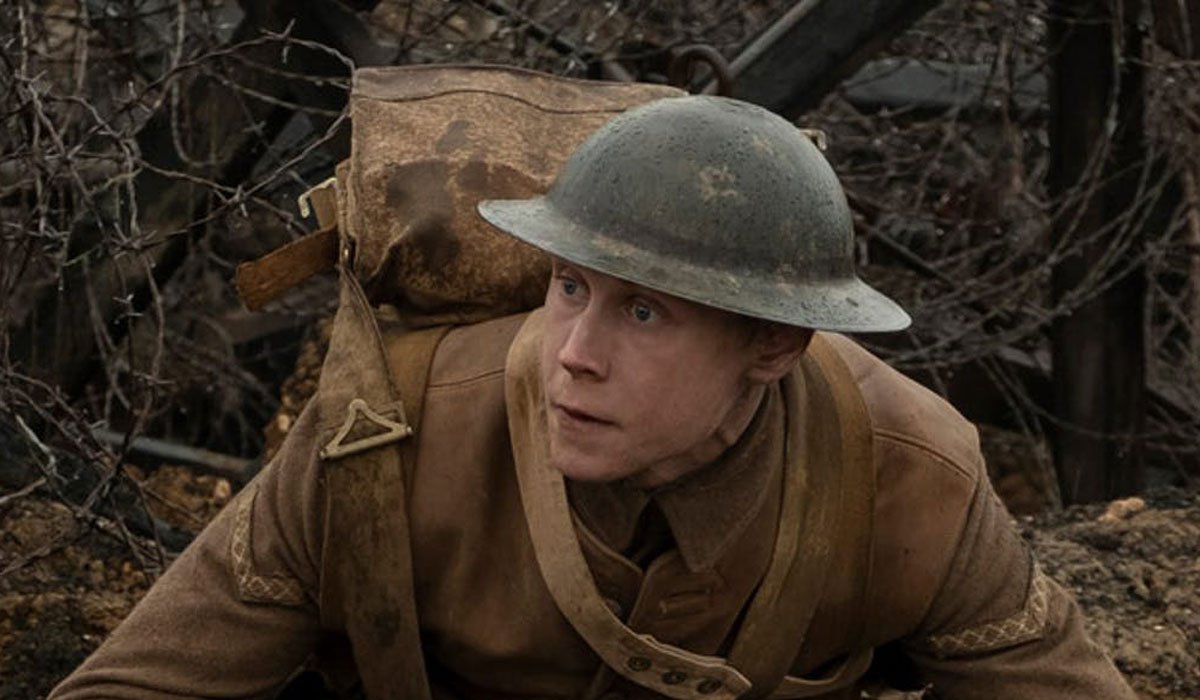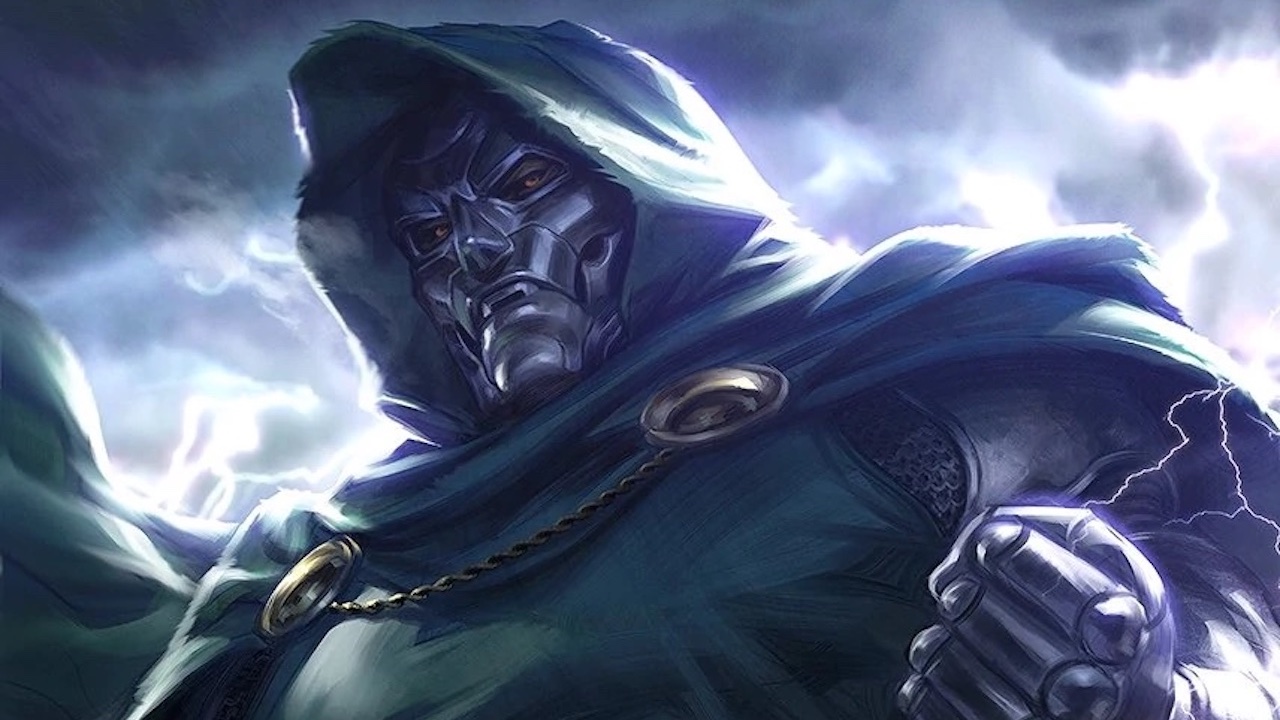Yes, Filming One Long Take For 1917 Proved To Be Insanely Difficult

Everyone and their mother knows creating a major motion picture is not an easy take. There’s a lot of lighting, framing, resetting equipment, and of course the performances, each time a director yells, ‘Action.’ However, when it came to director Sam Mendes’ continuous shot epic 1917, the challenge of making the film seem like one unbroken stream of real time madness proved to be insanely difficult, as one would expect from such an exercise.
This much was confirmed when I was given the opportunity to speak with Mendes, as well as writer Krysty Wilson-Carnes, during the press day for 1917’s limited release. On behalf of CinemaBlend, I got to ask both of them just what the hardest part about using this format was, as well as what they thought the most difficult sequence was to execute through such a vision.
As it turns out, the locked down format that 1917 had to adhere to made the entire film an obstacle to overcome, as Sam Mendes said it best when he told me the following:
In every way, every scene had its own challenges. It was like a mini movie, and then you string these mini movies together as you go, like you say, and there’s no way out. You can’t edit, so you have to commit.
One gigantic factor that made the World War I drama so challenging was the age-old problem of maintaining continuity. While that’s taxing enough when it comes to a film that can be strung together in the editing room, the real time format of 1917 offered no such comforts.
Not only did Sam Mendes have to rely on filming everything he needed at the moment he was filming it; he also needed to delay filming certain sequences until the conditions were right. Put those restrictions on top of the action that the director mentions in his continued remarks below, and you’ve got a film that’s probably as tense to make as it is to watch:
Everything was equally difficult, because they were so long, the takes. Obviously the more technically challenging ones were things like walking across a broken bridge across a canal, you know. Jumping down off the towpath, running up steps into a lockhouse, up the stairs, knocking that…falling backwards down the stairs, all this in one take. Very complicated [stuff] technically. But then you’ll go [and] actually spend probably longer on the more human scenes, the more emotional scenes. Because yes the camerawork is quite delicate, but also you’re trying to get a great performance. You know, it’s not just about how they use their bodies. It’s about an emotional climax.
In a good natured way, it could be said that Sam Mendes has no one to blame for how hard 1917 was to make, except himself. While that remark is definitely fair, there’s some of that comedic blame that can be shared with the film’s writer, Krysty Wilson-Carnes.
Just as the movie was insanely difficult to shoot, it was even more insane to put the script together with the knowledge that it was going to be one continuous shot. So much so, that when Wilson-Carnes was asked during the New York Comic Con panel, she admitted that she told Sam Mendes that he was “batshit” when he dreamed it up.
Your Daily Blend of Entertainment News
As I spoke with her during our press day interview, Krysty Wilson-Carnes expanded on those difficulties, in the terms of how the writing process was continually evolving on 1917, on these certain terms:
From the writing point of view, all of it was really difficult. Because, I knew right away it was going to be one continuous shot, and it was going to be in real time. That has a whole host of problems that we don’t have time for me to bore you with. But basically the script, instead of being a map, has to be the finished film, has to be the destination.
Wilson-Carnes had an advantage on 1917 that a lot of writers don’t when it comes to editing their work. That killer edge came from the fact that she was on set pretty much every day, from start to finish, making sure what was being filmed and what was on the page could live in perfect harmony.
Tweaks were made on the fly, and ultimately she was living by an important motto that was shared during our discussion on the film’s intense production: “Every line is a prisoner.”
As Krysty Wilson-Carnes laid out in our chat, the script she co-wrote with Sam Mendes had to be exact in how it described what Dean-Charles Chapman’s Blake and George MacKay’s Scofield saw and did in the movie, but it also needed to work towards that “emotional climax” that Mendes saw as one of the cruxes to the 1917 experience.
Balancing those two factors on their own is hard enough. However, having to do so in an environment where you don’t have multiple takes to play around with and your shooting window is limited to specific conditions in continuity is something that puts 1917 in an even more rarified category of films that seem absolutely magical in their mere existence.
This too was understood by both Krysty Wilson-Carnes and Sam Mendes, as they described the challenges that this project presented them in their effort to make a thrilling, as well as honorable, tribute to the soldiers that fought through World War I. And you can hear both collaborators talk about the artistic difficulties 1917 presented them throughout the project, as you watch the clip from our interviews below:
Through all of the challenges, be they writing, staging, or filming 1917, nothing was as high stakes as the actual events that inspired the film’s narrative. This was something that was especially reinforced in everyone’s heads throughout production.
While actors George MacKay and Dean-Charles Chapman would be executing long takes of grueling sequences like their trek across No Man’s Land, a scene that according to Krysty Wilson-Carnes took about 40-50 takes to nail, this was still a walk in the park compared to the actual conflict that 1917 was trying to bring to life.
It was in discussing that scene as her pick for the most technically grueling that Wilson-Carnes put things into perspective, as follows:
We only had to do it for a film, and 100 years before men were doing it for real, and being shot at. So we had that in the back of our head always, like ‘We’ve got it easy.’ But it wasn’t that easy.
1917 is a spectacle that really should be seen on the big screen, but at the same time, it’s a film that remembers to honor the memories of those who fought in The Great War. With an insane dedication to making a technically flawless but also emotionally rewarding film, director Sam Mendes and writer Krysty Wilson-Carnes have crafted a perfect tribute to those men who came home, as well as the ones who didn’t.
1917 will be in limited release on Christmas Day, with a wide release slated for January 10th. So stay tuned to CinemaBlend for continued coverage, and feel free to check out the 2019 release schedule to see what movies you need to catch up on before the year closes out!

Mike Reyes is the Senior Movie Contributor at CinemaBlend, though that title’s more of a guideline really. Passionate about entertainment since grade school, the movies have always held a special place in his life, which explains his current occupation. Mike graduated from Drew University with a Bachelor’s Degree in Political Science, but swore off of running for public office a long time ago. Mike's expertise ranges from James Bond to everything Alita, making for a brilliantly eclectic resume. He fights for the user.
